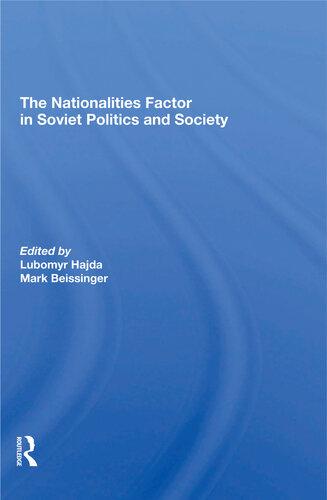

Most ebook files are in PDF format, so you can easily read them using various software such as Foxit Reader or directly on the Google Chrome browser.
Some ebook files are released by publishers in other formats such as .awz, .mobi, .epub, .fb2, etc. You may need to install specific software to read these formats on mobile/PC, such as Calibre.
Please read the tutorial at this link: https://ebookbell.com/faq
We offer FREE conversion to the popular formats you request; however, this may take some time. Therefore, right after payment, please email us, and we will try to provide the service as quickly as possible.
For some exceptional file formats or broken links (if any), please refrain from opening any disputes. Instead, email us first, and we will try to assist within a maximum of 6 hours.
EbookBell Team

5.0
58 reviewsWhat is meant when one speaks about the legacy of Imperial Russia in the nationalities problem of the contemporary Soviet Union?
The most visible legacy of Imperial Russia is the territorial configuration and ethnic composition of the USSR. The resemblance becomes even more striking when one compares the world map of 1913 with that for 1990 and notes the absence from the latter of the colonial empires of Britain, France, Germany, Belgium, the Netherlands, and Portugal, with their vast possessions in Asia and Africa. The contours of Russia then and the USSR now, in the meantime, have hardly changed. Admittedly, neither Helsinki nor Warsaw lies within the USSR, but their loss has been compensated by gains of areas that in 1913 had been known as Galicia, Bukovina, and the Ruthenian counties of Hungary. Then they belonged to the Austro-Hungarian Empire— of which no trace remains today.
That the Soviet Union is a multinational state, territorially largely coterminous with the former Russian Empire, does not in itself prove the existence of an "imperial legacy" in Soviet politics, however. More important is the question whether the Soviet Union is just "another name" for the Russian Empire or a fundamentally new kind of polity. To attempt an answer to this question it is essential to identify the specifically political points of similarity and contrast between the two states.
The first and perhaps most important issue concerns the relationship between state and society in the pre- and post-1917 eras. It is the contention of this essay that the nationalities problem is defined by the nature of this fundamental relationship. Thus we need to examine the structure of state-society relations under the Tsars and compare it with that in the Soviet period...